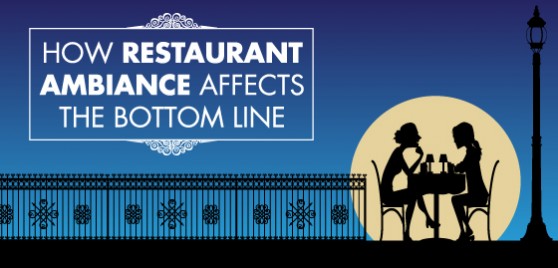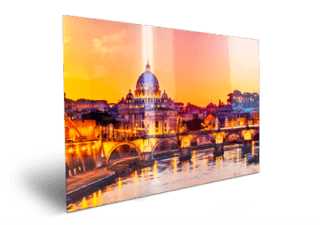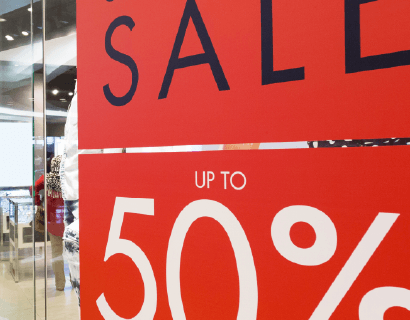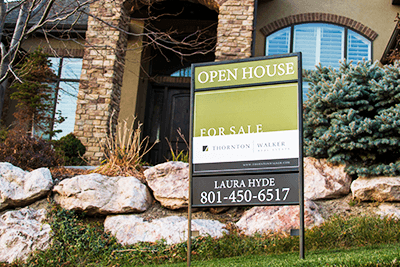
There are many factors that impact whether or not a restaurant is profitable. These include everything from the demand of the cuisine offered in the local area, food and other variable costs, marketing efforts, management and much more. While these are all obvious factors, one that is often overlooked in its importance as a contributing factor to long term profitability is the ambiance of the restaurant itself.
Studies have shown ambiance can affect everything from perceptions on responsiveness and reliability, how much and how fast customers eat, how much they spend, how long they stay in the restaurant, if they decide to return and more. As a restaurant owner, if you set the right kind of atmosphere, your customers feel comfortable and enjoy their experience at your restaurant. When you have high levels of customer satisfaction, you have repeat customers, which means increased profit.
A good experience also generates word of mouth marketing on behalf of your company. Word of mouth has proven to be one of the most powerful and trusted forms of marketing that a company can have working in its favor. Though often unquantifiable, word of mouth referrals undoubtedly have a positive long term impact on a restaurant’s profitability. Alternatively, if you don’t provide the best atmosphere for your type of restaurant, your results will suffer. You won’t retain customers nor get referrals. Both of these results will assuredly prove difficult to overcome in the long term and should be avoided at all costs.
Providing a complete and memorable dining experience is what helps your restaurant achieve an ambiance enjoyed by customers. When you appeal to a diner’s senses — sight, smell and hearing — they enjoy being at your restaurant. So if you’re looking to create or improve your restaurant’s ambiance, look to these three categories to help you achieve the perfect atmosphere that will be a critical factor in your attempt to be profitable long term.
Interior Design
Start with your restaurant’s interior design. It’s important to remember that before diners smell or taste the food, they judge your establishment based on the décor and colors surrounding them and how those things make them feel.
Let’s first look into a color scheme. Colors play a big role in ambiance because we relate and react to certain colors based on past experiences. You want colors that match your restaurant type and sometimes even match the foods you serve. Blues, purples and greens are known as the more difficult restaurant color schemes. The easier color schemes are red, yellow and orange, and the neutrals: beige, ivory, white, taupe, brown, etc. Warm colors promote positive feelings. They are also more stimulating colors that have been proven to increase one’s appetite, so be sure to correctly proportion warm colors and not overpower your food by having red walls and tons of red fixtures in the same room. Neutrals are a great color scheme because these colors help your diners feel calm, and it’s easy to make this theme work with different artwork, flowers and other furnishings.
Spacing also goes along with design. While you want your seating arrangements to look good when standing at eye level, you need to put yourself in the customer’s shoes and sit at different tables to see how it feels and looks for them while they’re dining. Make sure people aren’t crammed or feel trapped when they’re seated. If you want a design that creates a faster turnaround, place more people in the middle because they tend to feel slightly uncomfortable in that area and won’t linger after they’re done eating. Like many other things in restaurant management getting spacing just right will come with experience. While you want customers to feel comfortable you also need to balance your seating capacity and break even analysis so that on any given night you aren’t turning away too many people due to too much spacing and too little seating availability. The best restaurants remain flexible and can shift between these two competing demands based on the season and day. Ultimately each restaurant will be unique but keep this balance between spacing and capacity in mind.
Lighting is a third part of interior design that’s important. Lighting helps create an atmosphere for each table, which most restaurant owners want to do since each table is paying for their own experience. If you have the wrong lighting, it prevents the effectiveness of other elements you’re using to make your restaurant environment pleasant.
A final part of ambiance to consider is signage or other decorative aspects. Signs and decor are a great way to call attention to your restaurant and communicate what your ambiance is. Decor is obviously almost always used for ambiance purposes only, while signage can be used both for decorative purposes as well as functional purposes such as directing diners through your establishment. Whether it’s functional or decorative in nature make sure your restaurant signage is consistent with the rest of your ambiance you are trying to create.
Sounds
A restaurant’s sounds include music, talking, noises from the kitchen and acoustics. Sounds vary based on the type of restaurant. If you’re a lively, upbeat restaurant, then hearing people talking and having TVs or somewhat loud music is perfectly fine. All that adds to the kind of atmosphere you’re trying to create. But if you’re a more serene, romantic-feeling restaurant, then loud noises and lots of sounds aren’t good.
When it comes to music, slower tempo music helps diners relax and stay longer, while faster, more upbeat tempos help with restaurant owners wanting a more rapid turnover. Though according to one study slower music may lead to fewer calories consumed which may mean less money spent by diners. In this case you may need to use pricing to offset this fact. But remember to match music with your style of restaurant. A Mexican restaurant shouldn’t play country music nor should a more upscale restaurant play loud rock tunes. You also want to take into consideration your average age group when determining music and its volume. In the end it’s going to be unique from restaurant to restaurant just make sure you understand how your decisions in one area impact other elements of ambiance and your store’s potential profitability. Keeping this in mind and making sure your choice is consistent with both your restaurant type and other aspects of the ambiance you’re attempting to create is what is important.
Staff
First off, hire a staff full of hard-working, friendly people. Employees who work hard, properly handle their positions and know how to communicate with people provide a good environment for your guests. Without a doubt excellent service play a big role in the ambiance and resulting customer experience of any given restaurant.
Hosts and waiters are the ones who really need to know how to correctly and efficiently do their job. For restaurants with a more romantic, quiet setting, waiters need to be friendly and attentive, but not overly in those areas. They should take care of their tables but also give them their space to enjoy plenty of alone time, and they should be more on the serious side while using a quieter tone of voice. On the other hand, if your restaurant is faster paced and upbeat, then it’s acceptable for waiters to check more often on their tables, speak in a louder tone and show more of their funny side. When your staff handles their roles appropriately, the correct environment is created.
No matter the size of your restaurant, the food you serve or the kind of crowd you attract, creating the right kind of ambiance will go a long way in helping you run a profitable restaurant, so take the time and make sure yours is properly suited to your style and diners.



































